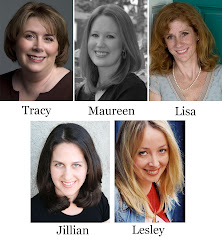Wow, I almost forgot I had to post today! With family visiting over the weekend, I hadn't even fully realized it was Monday. But with this week's subject being one of my favorites, I'm glad I remembered it was my day!
Query letters, for those not in the know, are what writers use to hopefully gain the attention of an agent or an editor. I'm only going to talk about fiction query letters in this post, because I've never written a query for a non-fiction book or proposal. So, with that in mind, think of a query letter as an advertisement for yourself, but more importantly, for your novel.
Query letters should be short (no more than one page in length), to the point, but still give the reader a clue about your voice, the story itself, and some other basic information. While there are lots of different thoughts on how to create a query letter, I'm going to share the way I've always written them. That doesn't mean my way is the right way, but it is what I'm familiar with. :)
First impressions matter! Your first contact with a literary agent or editor will likely be your query letter. The letter should be single spaced, double spaced between paragraphs, in standard business letter format, one inch margins, and a readable 12 point font. Here’s what your query letter should contain:
1. Put your snail mail address, email address, and phone number(s) at the top of the page, followed by the date, and then the agent/editor’s name and address. If you are unsure of gender, skip the “Mr.” or “Miss / Mrs. / Ms.” and simply write “Dear FirstName Last Name.”
2. The first paragraph should include why you are querying this particular agent/editor, the title of your novel, the approximate word count, and the genre of your manuscript.
3. The second paragraph should be your hook, which is a one sentence generalization of your novel. Think high concept.
4. The third paragraph should expand on your hook, giving a little more information about conflict, motivation, characters, and the purpose of the story. If necessary, you can use two paragraphs to do this, but it shouldn’t be any longer.
5. The fourth paragraph should be a short bio, including prior publishing history (if any), contest finals/wins (if any), if you’re a member of any writing organizations, and any other pertinent information. Think short and sweet!
6. The last paragraph is your concluding paragraph. State that you can send the partial or the full upon request. If you’re including a synopsis or sample pages with your query letter (only do this if the submission guidelines stipulate so), mention this here as well. If you’re enclosing a SASE, this can also be here.
7. Close the letter with “Sincerely,” your typed name, and then your signature.
If you're emailing your query letter, then obviously, you won't be including a SASE, and you shouldn't attach pages or the synopsis unless the agent or editor states that attachements are okay. Instead, just copy and paste them into the body of the email.
Other than that, that's it! Again, the most important thing to remember is to follow the submission guidelines for who you're submitting to. Beyond that, just keep it simple!
Subscribe to:
Post Comments (Atom)


3 comments:
Let me just second the "follow the submission guidelines" point. Agents are looking for a reason to reject--don't let it be because you sent your pages as an attachment or something.
Tracy -- you should teach a course on this! Great tips :-)
Sage, sound, terrific advice.
Perfect.
Post a Comment